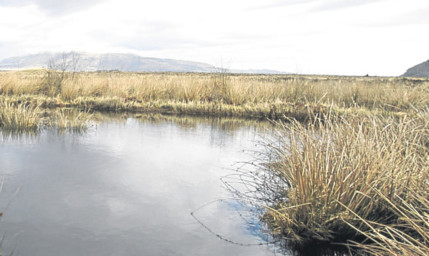Scottish Natural Heritage (SNH) has defended its stewardship of Loch Leven after a landowner attacked the “sad state” of the nature reserve.
Michael Smith, of Threapmuir Farm, Kinross, claimed the way the loch was being managed was causing damage to under-siege wildlife.
“The primary problem is a huge colony of predatory lesser black-backed gulls, ever increasing on the 73-acre St Serf’s Island to the detriment of all other wildlife on the loch and surrounding countryside, foxes and corvids excepted,” said Mr Smith after a fishing expedition.
“Near one island the calm conditions exposed lots of feather and down, which marked the demise of a brood of shell duck that had been gobbled up by the big gulls. Most shell duck have now abandoned Loch Leven as a safe breeding site, along with many other species.
“On returning to the pier, I observed a commotion which turned out to be a hapless tufted duck trying to defend the brood from an attack by six or more big gulls.
“Five ducklings were consumed before I could shepherd the duck and her remaining four ducklings to the relative safety of Alice’s Bower.”
Mr Smith said that SNH, as custodian of the loch, and RSPB, which has a reserve at Vane Farm, should be brought to account for “protecting such a huge colony of predatory big gulls to the detriment of all other species of duck, waders, terns and small gulls”. which he said amounted to a “wildlife crime”.
“Both organisations appear to be unaccountable for the damage they have done and are doing to the precious bio-diversity of our wildlife,” said Mr Smith.
The RSPB said that, as the management of the loch itself and St Serf’s Island rested with SNH, it would leave it to the heritage body to comment.
Denise Reed, SNH Tayside and Grampian operations manager, responded: “We share Mr Smith’s concerns about the decrease in breeding duck numbers on Loch Leven. We’ve put considerable effort into trying to understand and reverse this decline.
“We understand Mr Smith’s perception that this decline is related to an increase in gull numbers on the reserve and, while we remain open to this theory, evidence seems to rule this out as the main cause.
“A previous study found that there was no drop in duck brood productivity over the last 20 years before and after the lesser black-backed gull colony arrived. A recent review of the figures found no reason to alter this conclusion.
“We also recently carried out an extensive nest survey over several days, involving reserve staff and experts from elsewhere in Scotland. Early results from this indicate that ducks may actually favour nesting in close proximity to the gulls.
“We’re currently reviewing the evidence of all the factors which might be affecting the ducks, including the gulls.
“In the meantime, we continue to manage thehabitat to encourage the expansion of the ducks. None of the land managers on the site have managed it to favour gulls.
“Loch Leven is an outstanding wildlife site. It continues to support huge numbers of wintering wildfowl among the largest in Britain. Water quality, which underpins much of the other interest of the site, as well as the fishery, have improved beyond all recognition, in no small part due to the efforts of SNH and others.
“With the opening of the final link in the trail, we anticipate an increase on the 300,000 visitors in 2013, who come to enjoy the wildlife spectacle on the reserve, significantly boosting the local economy.”
